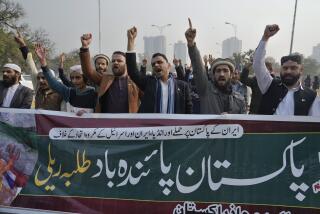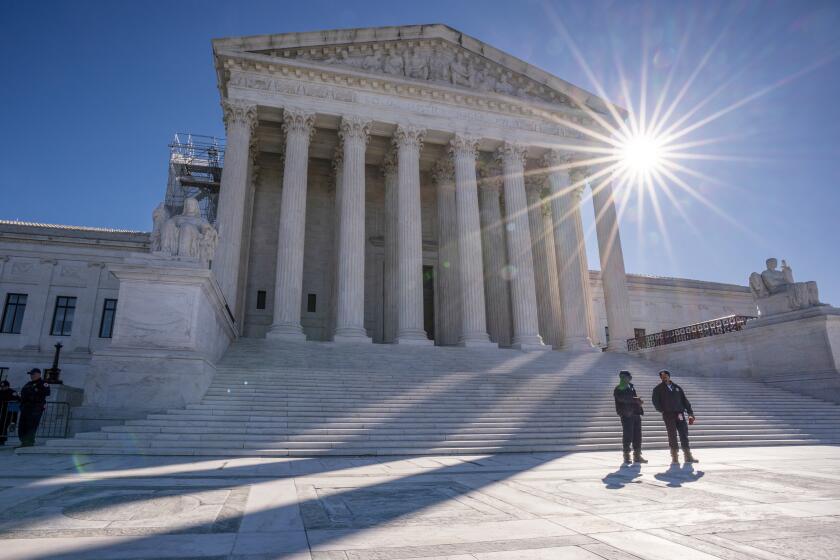Ominous Game on India-Pakistan Border
- Share via
When I met with Gen. Pervez Musharraf, now the president-by-referendum of Pakistan, I asked him whether he would agree to his daughter marrying a Hindu. His answer was uttered in one single word: “Never.” Why not? “Because he’s not a Muslim.”
Years ago, when I asked Rajiv Gandhi, then India’s prime minister, a similar question about his child marrying a Pakistani Muslim, he looked me straight in the eye and declared: “He’d better be very rich.”
India and Pakistan carry mutual antipathy that I doubt can be resolved by shuttle diplomacy handled by the new Henry Kissingers of the world. Talk is cheap, and it won’t be enough.
There are about 600,000 Indian soldiers poised to attack as they protect their 1,800-mile border with Pakistan. While the Indian army may not be one of the most efficient forces in the world, there are still millions of fingers on a million rifles; 400,000 men are spread elsewhere, including along the Chinese border.
The Pakistani army is much smaller and has deployed about 250,000 troops on the border with India.
India has kept its huge army on full alert for five months and provided fuel to the flames of terror attacks through an overdose of warnings and crescendos of threats.
Now India has to deliver. It can do so in one of four ways: by cutting diplomatic relations with Pakistan; by carrying out, with small special forces units, punitive attacks on selected Pakistani targets; by moving its army into Pakistan with the intent of “cleaning up” big areas of terrorists; or by launching a nuclear tactical attack.
Of these options, the nuclear attack is an absurdity, unless someone really runs amok; an invasion is almost not feasible; and cutting off diplomatic ties is an option that India itself would see as losing any chance to reduce the threat.
Thus the only way that India can react would be to use elite forces to attack a couple of targets inside Pakistan that would lead, basically, to nothing but the satisfaction of its public for a short time. It also runs the risk that members of Indian special forces might be killed, get lost or be taken prisoners of war and the whole event would turn into a face-losing fiasco.
Since Pakistan is not a democracy, it has less to risk than India. Ambassador Munir Akram, Pakistan’s representative to the United Nations, has said: “I can guarantee that we will not attack first. Why should we attack? We’re in a good situation, versus India, which held so many mobilized troops for five months and created a big credibility gap between declarations and deeds.”
Pakistan enjoys two advantages. It is an ally in the U.S. war on terrorism, and every U.S. Air Force plane based in a Pakistani airport serves as an insurance policy against an Indian airstrike on that runway.
While Pakistan considers India the “big bully” that occupies Kashmir, India considers Pakistan a terrorist haven where illegal forces mingle and interlock with a sympathetic government.
India is convinced that Pakistan is behind the terrorist acts, while Pakistan accuses India of no less than staging these attacks on itself for the purpose of gaining Western sympathy.
To an outsider, India looks like a giant that has to simultaneously protect its long border with Pakistan, defend itself from the onslaught of Muslim terror attacks and satisfy the cry of its masses for revenge.
The problem is that the giant with three tasks has only two hands.
*
Ranan R. Lurie, a senior associate at the Center for Strategic and International Studies in Washington, D.C., is a syndicated columnist and political cartoonist.
More to Read
Sign up for Essential California
The most important California stories and recommendations in your inbox every morning.
You may occasionally receive promotional content from the Los Angeles Times.









